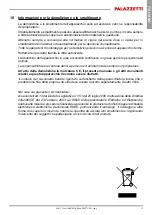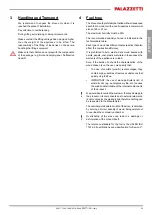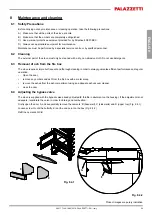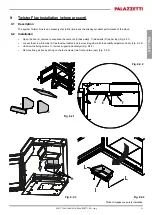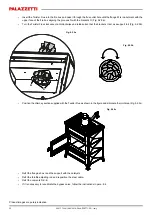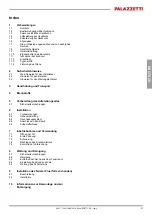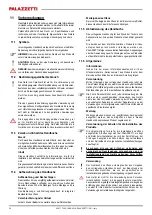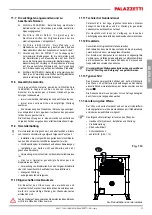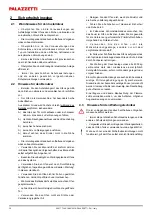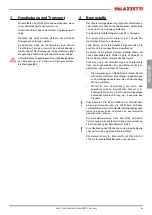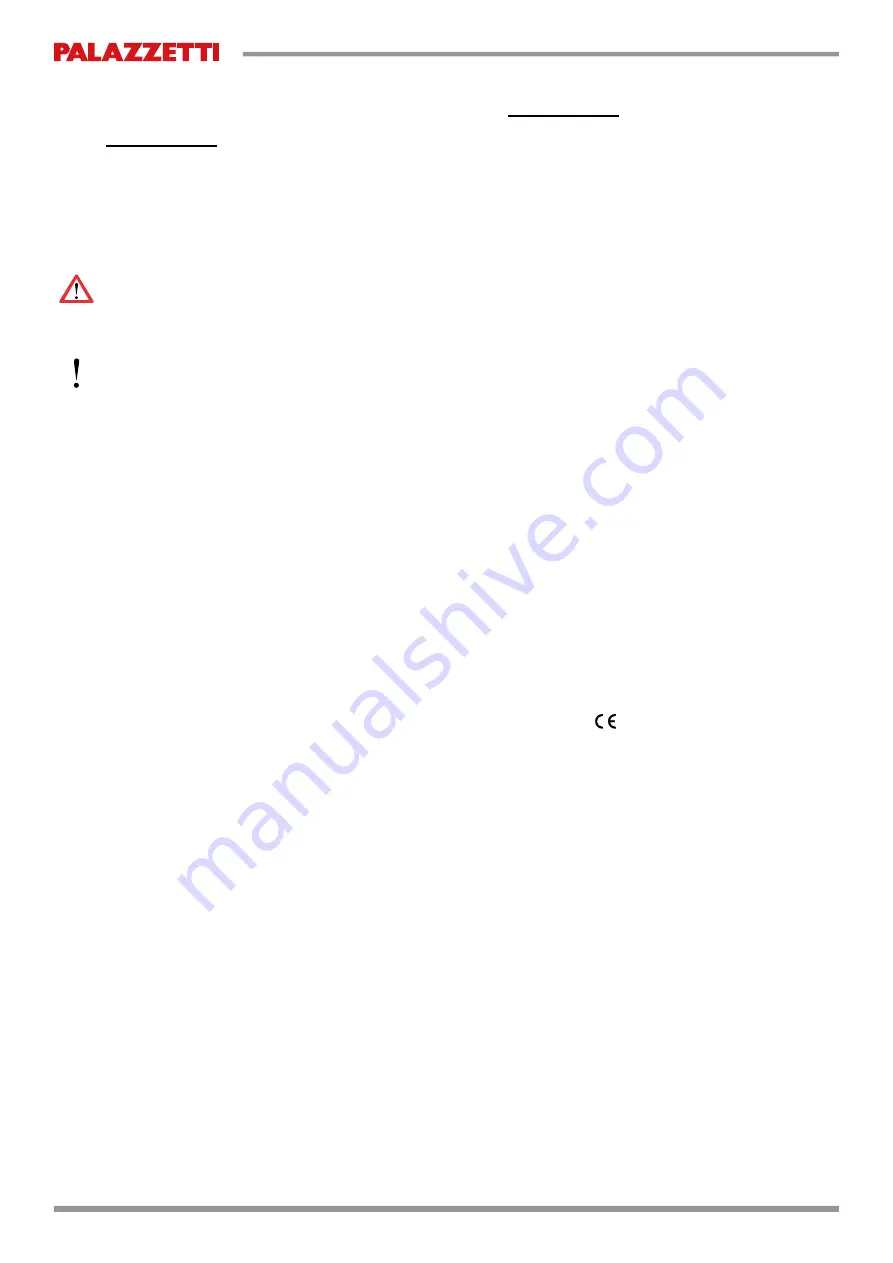
24
00 477 7300- 18/02/2019 - PALAZZETTI - PN - Italy
5 Preparation of the place of
installation
5.1 Safety Precautions
The responsibility of the works carried out in the area
where the stove will be installed falls, and remains, on the
user; the latter is also entrusted with the execution of the
inspections related to the installation solutions proposed.
The user must comply with all local, national and
European safety regulations.
The appliance must be installed on floors with adequate
load bearing capacity.
Where the floor does not have sufficient load-bearing
capacity, it is recommended to use a load distribution
plate of adequate size.
The operations of assembly and disassembly of the stove
are reserved only to specialized technicians*.
It is recommended to make sure about their qualifications
and their actual capacity.
The person in charge of the installation, before starting
assembling or disassembling the machine, must comply
with the safety precautions required by law and in
particular to:
A) must not operate in adverse conditions;
B) must operate in perfect psychophysical conditions
and must check that the personal protective
equipment, are intact and functioning perfectly;
C) must wear safety gloves;
D) must wear safety shoes;
E)
must ensure that the area affected by the phases of
assembly and disassembly is free from obstacles.
6 Installation
6.1 Introduction
•
Improper installation can affect the safety of the
equipment.
•
In presence of flammable structures or other materials
behind or besides the furnace, respect the minimum
safety distances reported on the product booklet.
• All combustible materials that are located in the area
radiated by the heat from the glass of the door must be
placed at a distance of at least 150 cm from it.
6.2 Height Adjustment
To adjust the final height of the stove it will be sufficient
to act on the adjusting screws of the feet.
6.3 Fumes evacuation system
For the possible installation of the Twister Flue, to
be carried out before connecting the stove to fumes
evacuation system, refer to para. 9 of this manual.
The stove must be connected to a fumes evacuation
system suitable to ensure an adequate dispersion into the
atmosphere of the combustion products,
in compliance
with standards EN 1856-1-2 EN 1857, EN 1443, EN
13384-1-3, EN 12391-1, UNI 10683
both for size and
for the materials used in its construction.
T h e s i z e o f t h e c h i m n e y
s h o u l d b e i n
accordance with what reported in the Technical
Sheet (average draft 12 Pa with door closed).
The components of the systems for the evacuation
of combustion products must be declared adequate
for the specific operating conditions and provided
with marking
.
The section of the flue will remain constant for the whole
of its height.
A collection chamber for solid materials and any
condensation, must be provided under the smoke inlet
channel.
Obsolete
flues, built with unfit material are outlaw and
jeopardise the proper functioning of the stove.
The flue system must be provided with its own grounding
connection in accordance with the UNI 10683.
A
perfect draft
is given mainly by a flue free from
obstacles such as bottlenecks, horizontal paths, corners;
any displacements of the axis must have an inclined
path with a max angle of 45° with respect to the vertical,
better still if only 30°.
The
chimney
must be
wind proof
with internal section
equivalent to the one of chimney and the passage section
of the exhaust smoke at least
twice
the one inside the
chimney.
Each firebox should have its own independent fumes
evacuation system.
If the chimney that you want to use for the installation
was previously connected to other stoves or fireplaces, it
is necessary to carry out a thorough cleaning in order to








